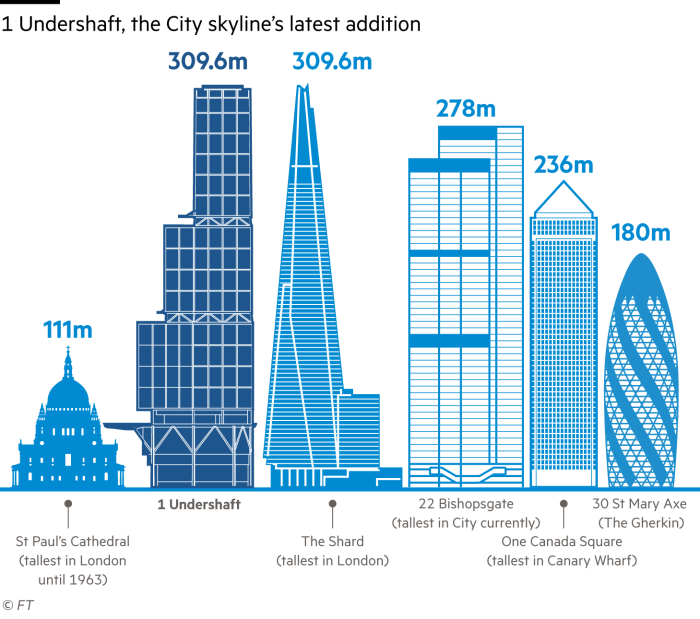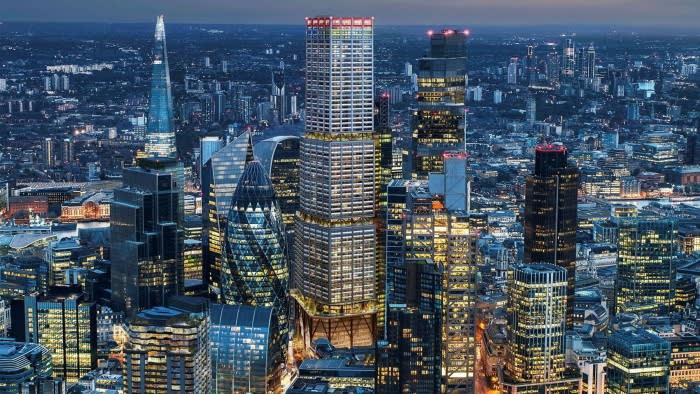Unlock Editor’s Digest for free
Roula Khalaf, editor-in-chief of the FT, selects her favourite stories in this weekly newsletter.
The City of London has postponed a decision on the Square Mile’s new tallest building after the chairman of insurance market leader Lloyd’s of London lodged a last-minute objection.
City of London Corporation officials had recommended approval for the 73-storey skyscraper, called 1 Undershaft. But on Tuesday they were questioned by members of the corporation’s planning committee over the encroachment on St Helen’s Square at the base of the tower.
Shravan Joshi, planning director at the City of London Corporation, said delaying the decision would allow time to “go back and negotiate with the applicant” over the fate of the public square.
The unexpected decision followed a letter from Lloyd’s chairman Bruce Carnegie-Brown objecting to the project because it would “deprive the city of a very important meeting space”.
The City of London Corporation was expected to approve the groundbreaking project, almost a decade after it was first proposed. At roughly the same height as the Shard, it would be one of the tallest buildings in Europe.
Lloyd’s recently agreed to extend its lease on its Richard Rogers-designed headquarters across the road. This is the heart of the city’s specialist insurance market, where brokers and underwriters still meet face-to-face to work out policies.
1 Undershaft would be 50 storeys taller than the existing 23-storey 1960s tower on the site, formerly home to Aviva, whose design was influenced by modernist architect Mies van der Rohe. The Twentieth Century Society, which campaigns for the preservation of modern architecture, argued that it should not be demolished.
The site is between four well-known buildings: 22 Bishopsgate, now the city’s tallest building; 122 Leadenhall Street, known as “The Cheesegrater”; the Gherkin; and Lloyd’s of London, which is a Grade II listed building and nicknamed “Inside Out” because its services, such as lifts and pipework, run on the outside.
The project was first approved by the city in 2016 as a simple tower design by architect Eric Parry. It is being pushed by Aroland Holdings, in partnership with developer Stanhope. Aroland is backed by Singaporean tycoon Kuok Khoon Hong, chairman and CEO of food processing giant Wilmar International Limited, one of the world’s largest owners of oil palm plantations.

Last year, Aroland applied for permission to significantly expand the tower, adding an extra floor in height and a stepped design that would create multiple terraces and increase the building’s floor space. The new design, also by Parry, includes a garden on the 11th floor and a viewing gallery on the top level that would be open to the public.
The architects said the new design would form the “crowning glory” of the city’s skyscrapers and would fit in with plans to make London’s business district more attractive to workers and visitors, with “high-quality outdoor spaces, public realms, enhanced sustainability and a cultural and creative offer”.
In response to Tuesday’s decision, a spokesperson for the project said it had “listened carefully to the comments received about the public space”.
“We will work closely with the City of London Corporation and our neighbours in the insurance sector to consider these minor changes to the scheme,” they added.
However, the new proposal also takes up a large part of St Helen’s Square. Committee members said Carnegie-Brown’s intervention highlighted the resistance to the project in the insurance industry.
Carnegie-Brown said the 11th-floor garden would be “significantly less attractive than the space it would replace” because of security requirements. Similar rooftop gardens elsewhere in the city require visitors to go through airport-style security, sometimes causing lines.
Historic England objected to the development, as did neighbouring property owners including Cheesegrater investor CC Land and pension fund Universities Superannuation Scheme. They oppose much of the new design and the loss of public space.
